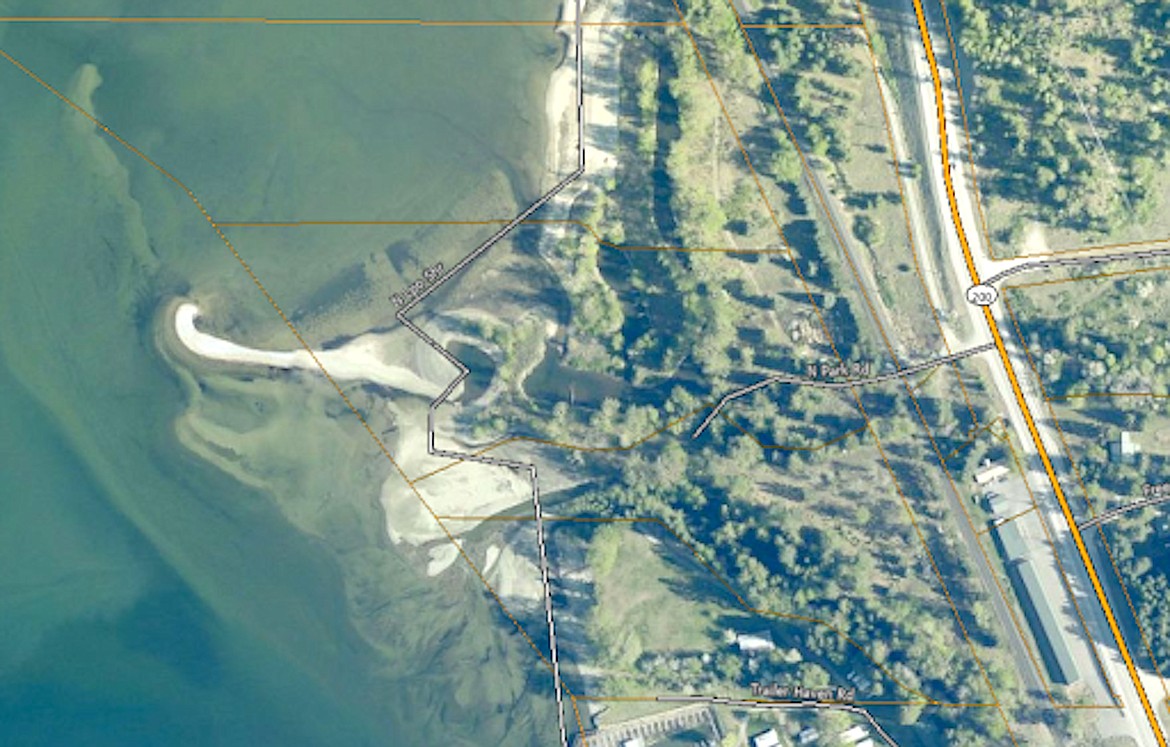Lawsuit challenges marina, housing development
▶️ Listen to this article now.
HOPE — Approval of a marina and housing development near bull trout habitat in the Trestle Creek wetlands spawned a lawsuit by two conservation groups Thursday.
In the lawsuit filed in U.S. District Court, the Center for Biological Diversity and Idaho Conservation League said the approval threatens the federally protected trout in one of its most critical habitats.
In addition, the lawsuit contends the agencies failed to consider the direct and cumulative impacts of building both the marina and residential development on bull trout critical habitat, resulting in violations of the Endangered Species Act and the National Environmental Policy Act.
“I’m highly concerned about this development’s threats to bull trout, Trestle Creek and Lake Pend Oreille,” said Whitney Palmer, a Sandpoint-based staffer for the center. “It’s disappointing that two federal agencies authorized this incredibly destructive project. Bull trout are resilient fish, but even they can’t withstand the massive habitat destruction and increased boat traffic this project will bring near the mouth of Trestle Creek.”
In the lawsuit, the conservation groups said the agencies’ flawed and unlawful determination that the project will not jeopardize the continued existence of bull trout” was in error and would “adversely modify bull trout critical habitat.”
In the nearly 40-page complaint, the plaintiffs allege that the feds broke the Endangered Species Act, the National Environmental Policy Act, the Clean Water Act, and the Administrative Procedures Act.
Critics have argued that the planned development along Lake Pend Oreille, near Trestle Creek would threaten one of the most important spawning streams for federally protected bull trout in the Pacific Northwest.
Despite this, on January 13, 2021 county commissioners approved the original plan and on May 11, the commissioners approved modifications to the proposed marina and residential development at the mouth of Trestle Creek.
“Bull trout require specific habitat components, often referred to as “the four Cs”: cold, clean, complex, and connected habitat,” the complaint said.
The plaintiffs are asking that the court declare that Fish and WIldlife Service’s Biological Opinion violates the Endangered Species and Administrative Procedures acts, vacate the Biological Opinion and remand to the Fish and Wildlife to reinitiate consultation under the Endangered Species Act, order the US Army Corps of Engineers to prepare a supplemental NEPA analysis, enjoin the Corps’ and the Service’s authorization of Project activities, and award the plaintiffs’ litigation costs.
Bull trout have been listed on the Endangered Species Act since 1999. In the US Fish and Wildlife Service’s explanation, they stated that “[b]ull trout are threatened by the combined effects of habitat degradation, fragmentation and alterations associated with dewatering, road construction and maintenance, mining, and grazing; the blockage of migratory corridors by dams or other diversion structures; poor water quality; incidental angler harvest; entrainment (process by which aquatic organisms are pulled through a diversion or other device) into diversion channels; and introduced non-native species.”
With regards to the ESA, ICL and CBD argue that the Fish and Wildlife failed to provide an “incidental take statement,” despite concluding that the proposed development “will ‘take’ bull trout — including by wounding, capturing, and killing some… and have long-term negative effects to some of the species’ designated critical habitat.”
Section 7 of the ESA requires federal agencies to “ensure that any action authorized, funded, or carried out by such agency… is not likely to jeopardize the continued existence of any endangered species or threatened species or result in the destruction or adverse modification of habitat of such species.”
However, Fish and Wildlife determined in their “Biological Opinion” that the proposed development would pose “no jeopardy” to the continued existence of bull trout, nor that it would adversely modify critical habitat, even though the Fish and Wildlife designated Trestle Creek as critical habitat for bull trout in 2010 and has recognized that there will be some “take” of the endangered species.
Another law that was allegedly violated was the National Environmental Policy Act. The complaint stated “NEPA requires federal agencies to prepare an environmental impact statement (EIS) for all ‘major Federal actions significantly affecting the quality of the human environment.’”
“If an agency is uncertain whether it must prepare an EIS, it may prepare an environmental assessment (EA) to determine whether the proposed action may have significant impacts requiring preparation of an EIS,” the complaint continued.
According to the minutes for the commissioners’ May 11 planning meeting, MOD0001-22, which modified conditional use permit (CUP) 0006-20, combined three 10,000-feet boat storage units into one 30,000-feet boat storage unit, relocate 33 parking spaces and add an additional five, and, perhaps most significantly, relocate the community drain field.
The groups contend in the complaint that when “deciding whether to allow activities to proceed under a CWA permit, the Corps [should engage] in a ‘public interest review’ that must encompass, among other effects, the extent to which water bodies will be harmed and the extent to which wildlife, including endangered species, will be impacted.”
And the last law cited in the complaint was the Administrative Procedure Act (APA). The APA directs the reviewing court to “compel agency action [when such action has been] unlawfully withheld or unreasonably delayed” and to “hold unlawful and set aside arbitrary, capricious, an abuse of discretion, or otherwise not in accordance with law.”
Supreme Court precedent from Motor Vehicle Manufacturers vs. State Farm (1983) found that “an agency rule would be arbitrary and capricious if the agency has relied on factors which Congress has not intended it to consider, entirely failed to consider an important aspect of the problem, offered an explanation for its decision that runs counter to the evidence before the agency, or is so implausible that it could not be ascribed to a difference in view or the product of agency expertise.”

